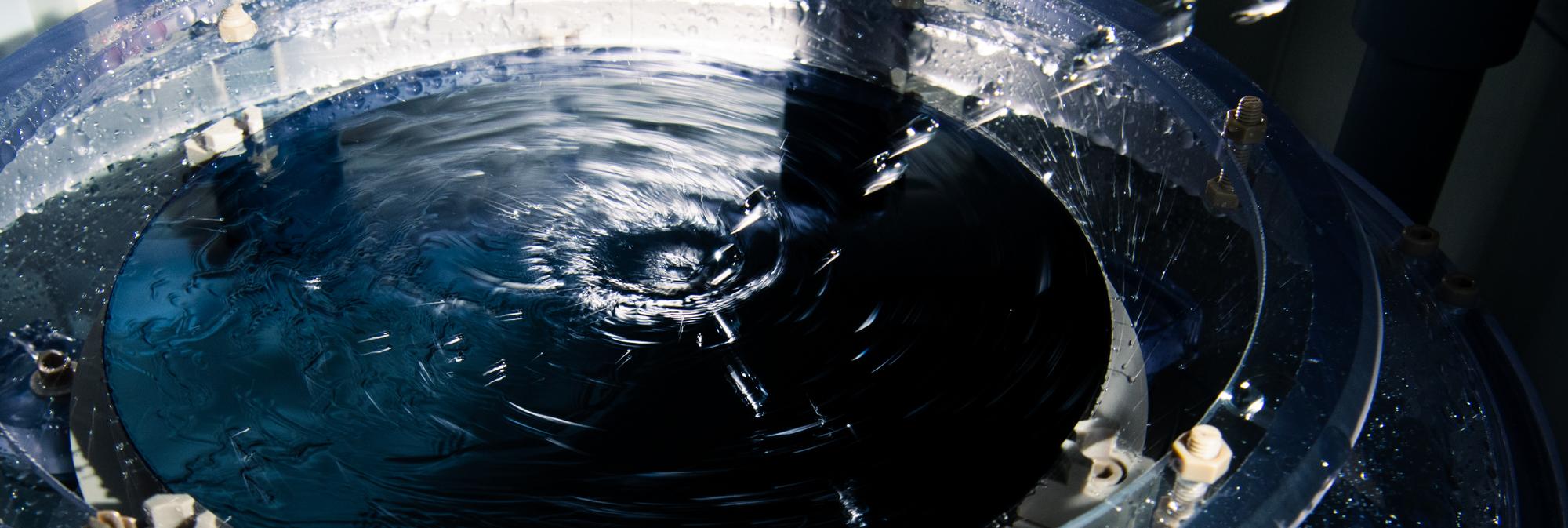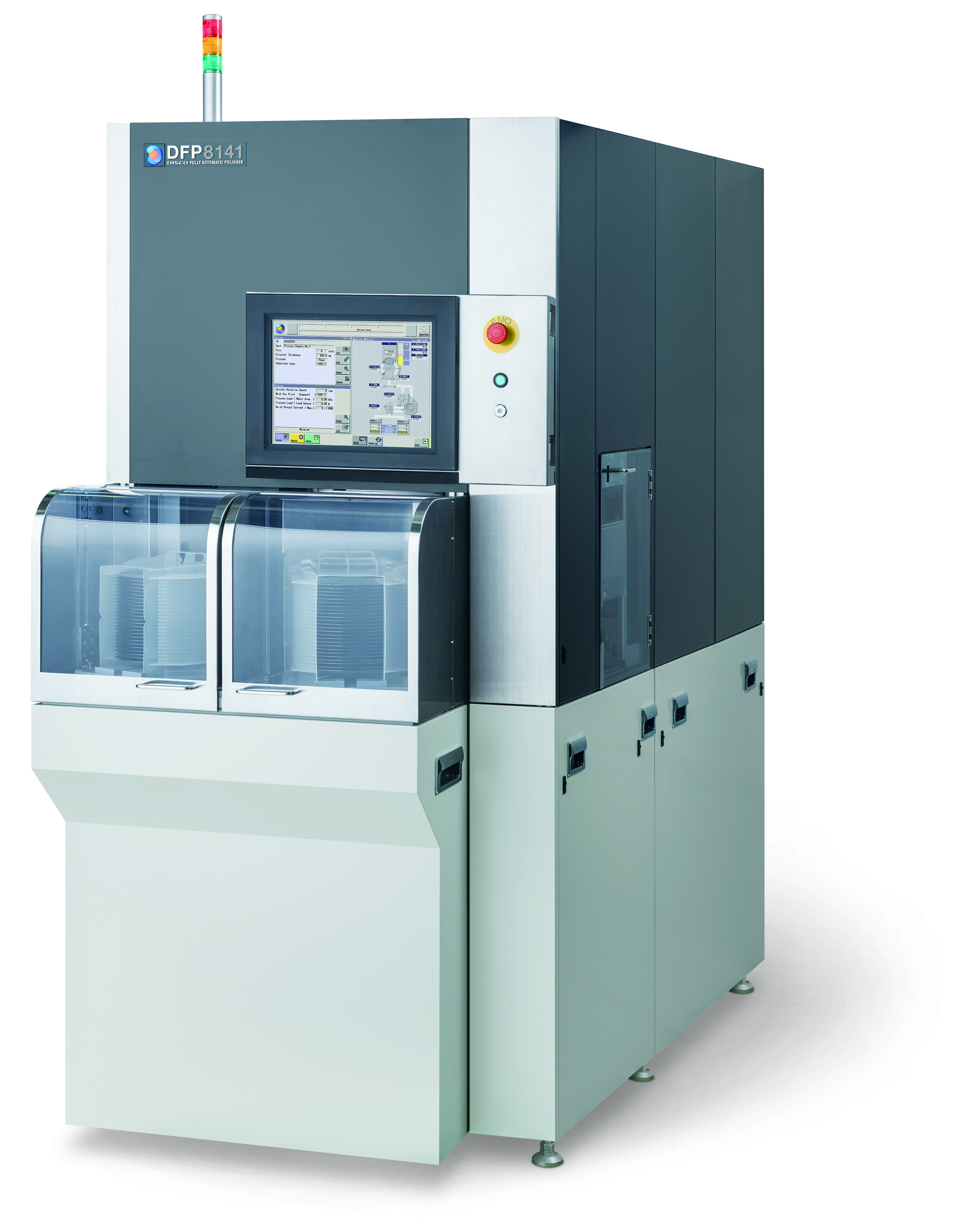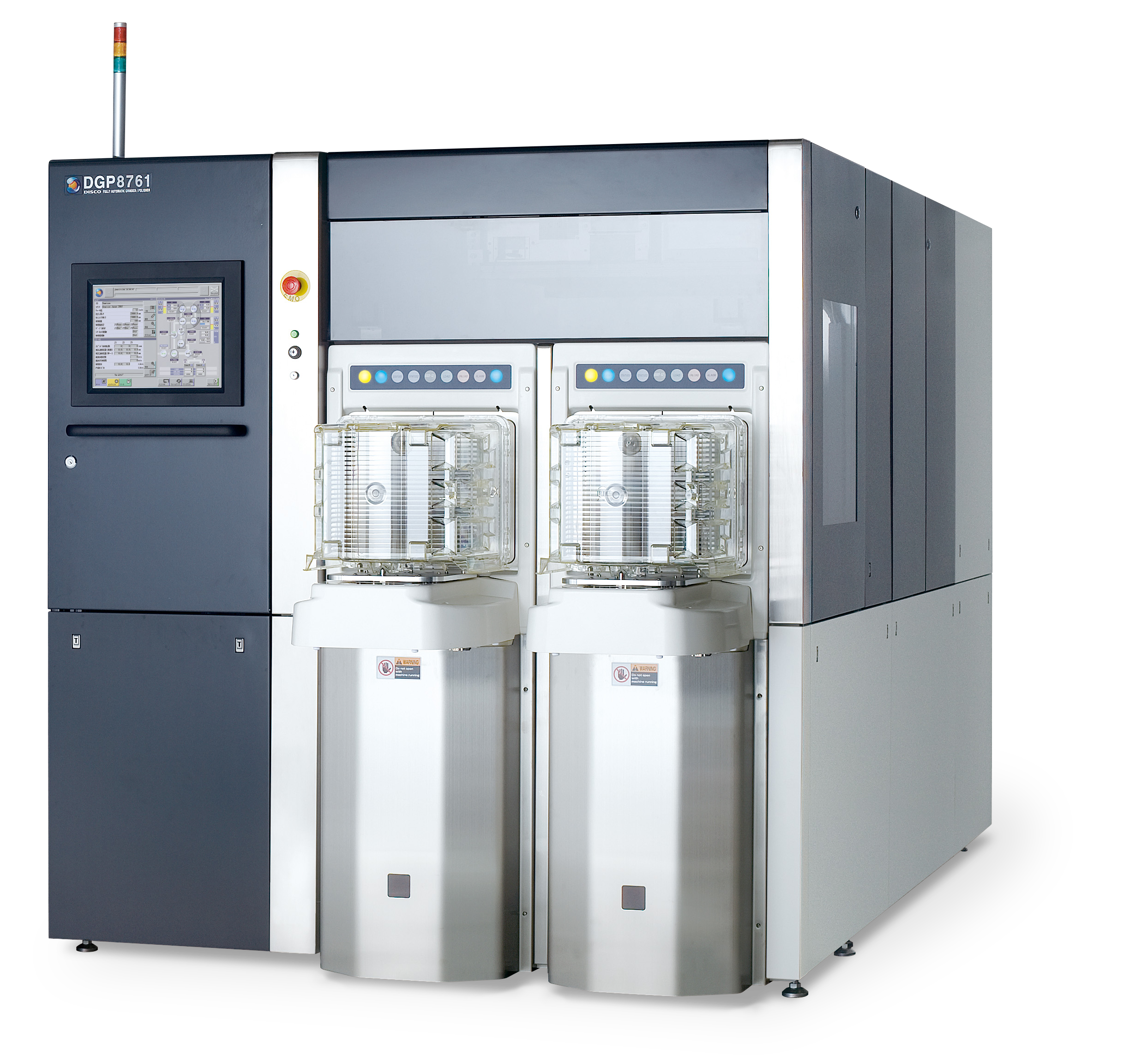
Wet Polishing- Chemical-Mechanical Polishing (CMP)
Process overview
Wet polishing is a process that involves water or chemicals (i.e. slurry with abrasive particles), while dry polishing is a process that does not use any water or chemicals. Chemical-mechanical polishing (CMP) is a type of wet polishing in which the surface of a workpiece is smoothed by both physically breaking and chemically etching off the irregular topologies. Workpieces that are less than a few millimeters thick are polished to a mirror surface using a wet polishing pad. This process is used with a wet polishing pad to achieve a mirror finish on workpieces with thickness less than a few millimeters.
The polishing pad is a nonwoven fabric attached to a rotating circular base, and it is used together with water and a chemical when polishing.
The polishing pad is placed parallel to the table on the work axis. The whole surface of the workpiece is polished by pressing the pad against it while turning both the pad and the table.
The type of chemicals and polishing pads used during polishing differs with the workpiece.
Wet polishing machines can be classified into two groups; the first group of machines can polish one wafer at a time while the second group can run through a batch of wafers. It is possible to achieve a higher thickness accuracy with the first group of machines; however, the second group of machines offer more productivity thanks to their higher level of automation.
There are two types of machining layouts in polishers. In one layout, the polishing pad is on top and the wafer is at the bottom placed on a table. In the other layout, the polishing pad is placed at the bottom, under the wafer.

In the post processing stage for semiconductor packaging, when grinding to thicknesses below 100μm, small damages on the back surface can occur. To eliminate this, a polishing process called stress relief is performed. After the stress relief process, wet polishing is often performed in cases where high levels of cleanliness is desired.
CMP and wet polishing are also required during the packaging (post-processing) step after back surface grinding to improve the device performance of certain materials. Examples for these materials are sapphire (for optical devices) and lithium tantalate and lithium niobate for SAW filters in high-speed telecommunication devices.
In addition to the applications mentioned above, CMP is also used to achieve a mirror finish on the front and back surfaces of silicon substrates manufactured for semiconductor applications and when flattening thin film layers of insulation and gold on the front surfaces of silicon wafers during the circuit formation step (pre-process) in the order of nanometers.
Machines used for high-precision machining
DISCO has fully automatic machines that have only has polishing functions, as well as a machine with both grinding and polishing functions.
For the polishing process, a wafer is placed between the table and the dry polishing wheel, with the table at the bottom and the wheel on top.
-
Fully Automatic Polisher
Pad polishing


-
Fully Automatic Grinder-Polisher
Whetstone grinding, pad polishing


Fully Automatic Polisher
In addition to the polishing section, these machines have transferring and washing capabilities and can process a whole cassette automatically.
Fully Automatic Grinder-Polisher
With both grinding and polishing combined in a single machine, the fully automatic grinder-polisher is also equipped with transfer and washing capabilities and thickness measurement of thin wafers.
Tools used for high-precision machining
Polishing pad
Common target materials and applications of wet polishing
・Surface mirror finish, back surface mirror finish polishing of silicon (Si) and silicon carbide (SiC)
・Surface mirror finish polishing of composite materials (e.g silicon-resin)
・Surface mirror finish, back surface finish polishing of materials for optical device applications (e.g sapphire)
・Surface mirror finish, back surface finish polishing of materials for SAW filters in high-speed telecommunication devices (e.g lithium tantalate, lithium niobate)
If you require solutions for your processing issues,
please contact DISCO CORPORATION.
-
Please contact DISCO CORPORATION.
Please feel free to contact us through the inquiry form or via phone call.
Inquiries -
Consultation for non-chargeable processing
If you are struggling with any processing issues,
please contact DISCO.Service details -
Easy confirmation in thirty seconds!
Online processing feasibility confirmationJust enter the conditions
Easy processing evaluation







